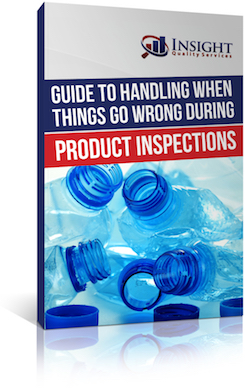Why is supplier development important and how can importers establish effective supplier development systems?
When importing finished goods or product components from overseas manufacturers, good supplier relationships are critical. To maximize supplier performance, it is not enough to simply set criteria for supplier selection, choose one or more partners, and then start ordering from them.
Suppliers should be viewed as strategic business partners with whom you have ongoing relationships. These relationships should be optimized and developed over time to get the best possible results for all parties.
A focus on continuous improvement is key to ensuring that the manufacturers in your supply chain will meet the needs of your organization into the foreseeable future. This focus helps you to accomplish goals such as maintaining the lowest possible costs, minimizing product defects, and ensuring on-time shipments.
Here we discuss 5 steps you can take with your manufacturing partners to implement an effective supplier development process.
Step #1 Complete a Needs Analysis
In order to get the results you want from a particular partner in your supply base, you first need to assess your current situation with them. This way, you can accurately determine a starting point for development.
This means setting Key Performance Indicators (KPIs) such as:
- On-Time Delivery Rate
- Defect Rate
- Responsiveness to Inquiries
- Pricing Meets Targets
Whatever needs you choose to focus on, the KPIs you select allow you to determine how far off a supplier is from hitting the mark.
From here you can work on developing a roadmap to further develop the supplier.
Step #2 Rate a Supplier Using Your KPIs
Rate your supplier on the KPIs you have chosen, then consider the urgency and importance of improving in each area.
Let’s say that your cost with the supplier is a bit higher than is ideal and that the factory is not consistently delivering on time. You might determine that the inconsistent delivery schedule is more critical than the per-unit cost since it is directly impacting your relationships with customers or is leading to lost sales opportunities.
As such, you determine that improving the delivery schedule is your number one priority, and working on lower costs is the second.
Step #3 Develop a Plan for Addressing Issues
Now that the key issues are identified, you should consider how to help the factory address deficiencies. This could mean engaging an outside party, implementing training, or putting new processes in place to address the issues.
In general, even if you are a small business, you will need to spend time at the manufacturer so that you can get an inside view of every step of the manufacturing process. This means taking one or more multi-day trips to the factory to work on the relationship and get an inside view of everything from pre-production through delivery.
Meeting with your supplier face-to-face allows you to determine the actual root causes of the issues you are seeing and to work together to come up with solutions.
Then you can put a plan in place to address the key issues that everyone agrees upon.
Step #4 Implement Supplier Development Plan
Once you’ve determined the real issues impacting supplier performance and have a plan in place for improvement, it is now time to implement. As you do, keep tracking your KPIs to see whether or not the supplier’s metrics are improving.
Have they been delivering more consistently? Are they able to lower costs by making manufacturing more efficient based on the changes you’ve discussed?
Continue monitoring the situation over time and consider steps you can take to improve even further.
Step #5 Move on to Next Supplier and Repeat the Process
Now that you’ve gone through this process with one supplier, you can repeat it with another one.
Rate all of your suppliers to determine which ones are the highest priority for supplier development and take steps to improve on these relationships. By doing so, you’ll be able to get better results from your suppliers over time and get better results for your business.
For more information about dealing with suppliers that have underperformed on quality inspections, we recommend downloading the following guide.
Free Guide: What to do When Things Go Wrong
When a quality problem happens – and they will – how you approach the problem makes all the differences in successfully squelching it.
Learn how to deal with the problem at hand, see potential quality gaps throughout your supply chain, and take proactive measures to avoid future problems.





Thanks for sharing
Thanks for the good work.
Soo helpful, thank you for your good job
Very informative and helpful piece. I hope to see more on this area.
Thank you, Nicholas. We’re glad you found it helpful. We will aim to talk more about supplier development in the future.